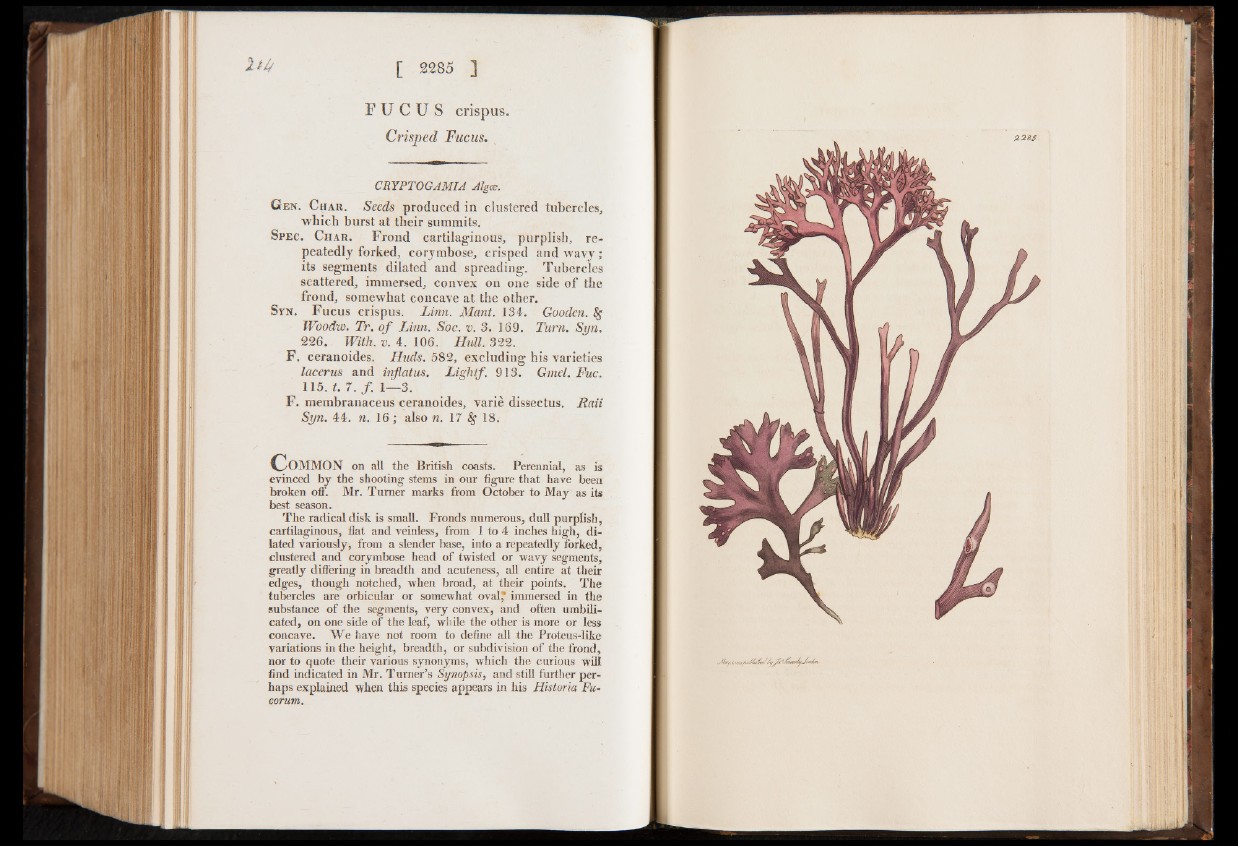
E U C U S crispus.
C r i s p e d F u c u s .
CRYPTOGAMIA Algae.
Gen. Char. Seeds produced in clustered tubercles,
which burst at their summits.
Spec. Char. Frond cartilaginous, purplish, repeatedly
forked, corymbose, crisped and wavy ;
its segments dilated and spreading. Tubercles
scattered, immersed, convex on one side of the
frond, somewhat concave at the other.
Syn. Fucus crispus. Finn. Mant. 134. Gooden. $g
Woodw. Tr. o f Linn. Soc. v. 3. 169. Turn. Syn.
2 2 6 . With. v. 4 . 106. Hull. 3 2 2 .
F. ceranoides. Huds. 582, excluding his varieties
lacerus and inflatus. Lightf. 913. Grnel. Fuc.
115. t. 7 . f . 1— 3 .
F. membranaceus ceranoides, varie dissectus. Raii
Syn. 4 4 . n. 1 6 ; also n. 17 Sg 18.-
C ommon on all the British coasts. Perennial, as is
evinced by the shooiing stems in our figure that have been
broken oft'. Mr. Turner marks from October to May as its
best season.
The radical disk is small. Fronds numerous, dull purplish,
cartilaginous, flat and veinless, from 1 to 4 inches high, dilated
variously, from a slender base, into a repeatedly forked,
clustered and corymbose head of twisted or wavy segments,
greatly differing in breadth and acuteness, all entire at their
edges, though notched, when broad, at their points. The
tubercles are orbicular or somewhat oval* immersed in the
substance of the segments, very convex, and often umbili-
cated, on one side of the leaf, while the other is more or less
concave. We have not room to define all the Proteus-like
variations in the height, breadth, or subdivision of the frond,
nor to quote their various synonyms, which the curious will
find indicated in Mr. Turner’s Synopsis, and still further perhaps
explained when this species appears in his Historia Fu-
corum.